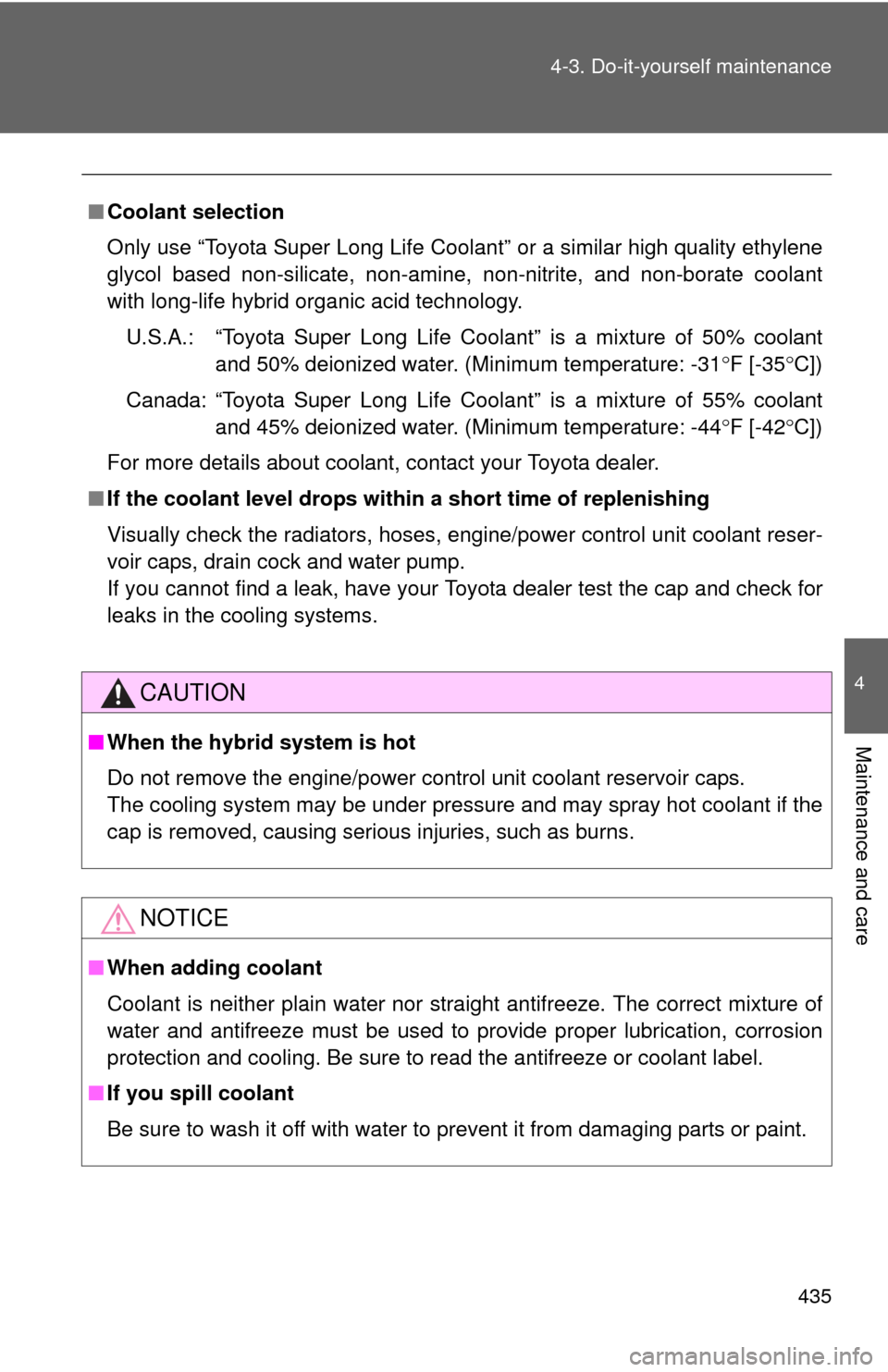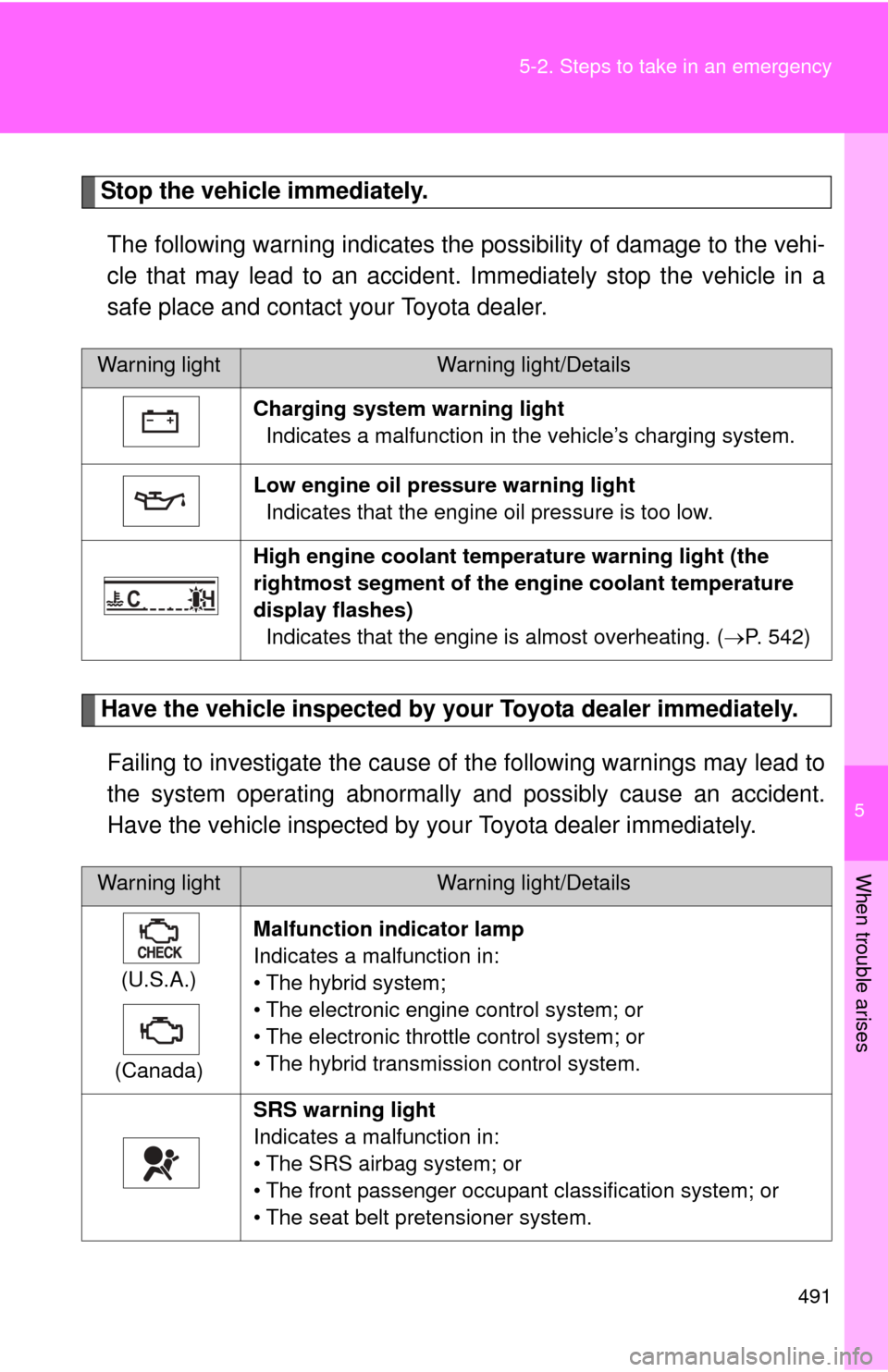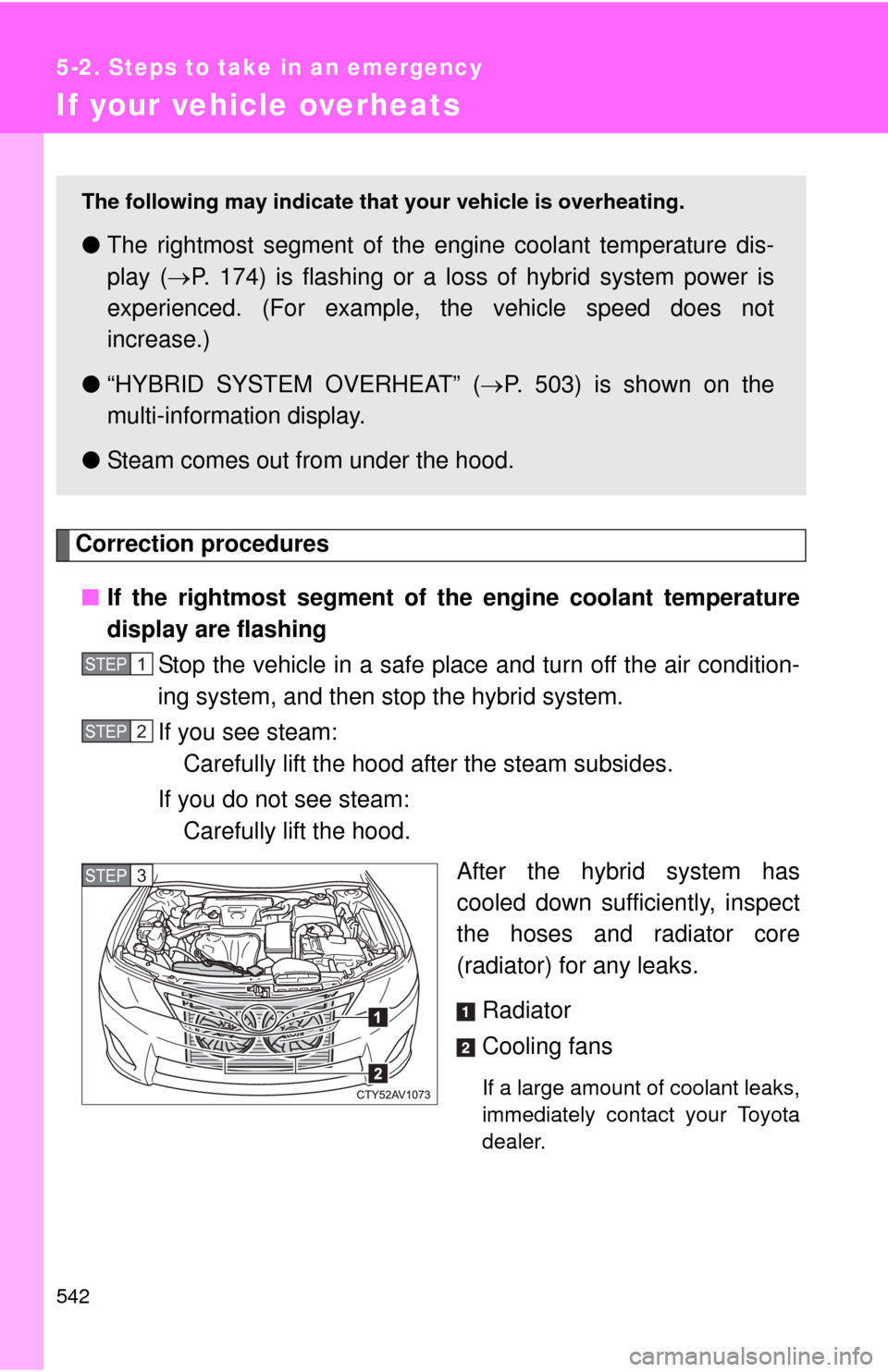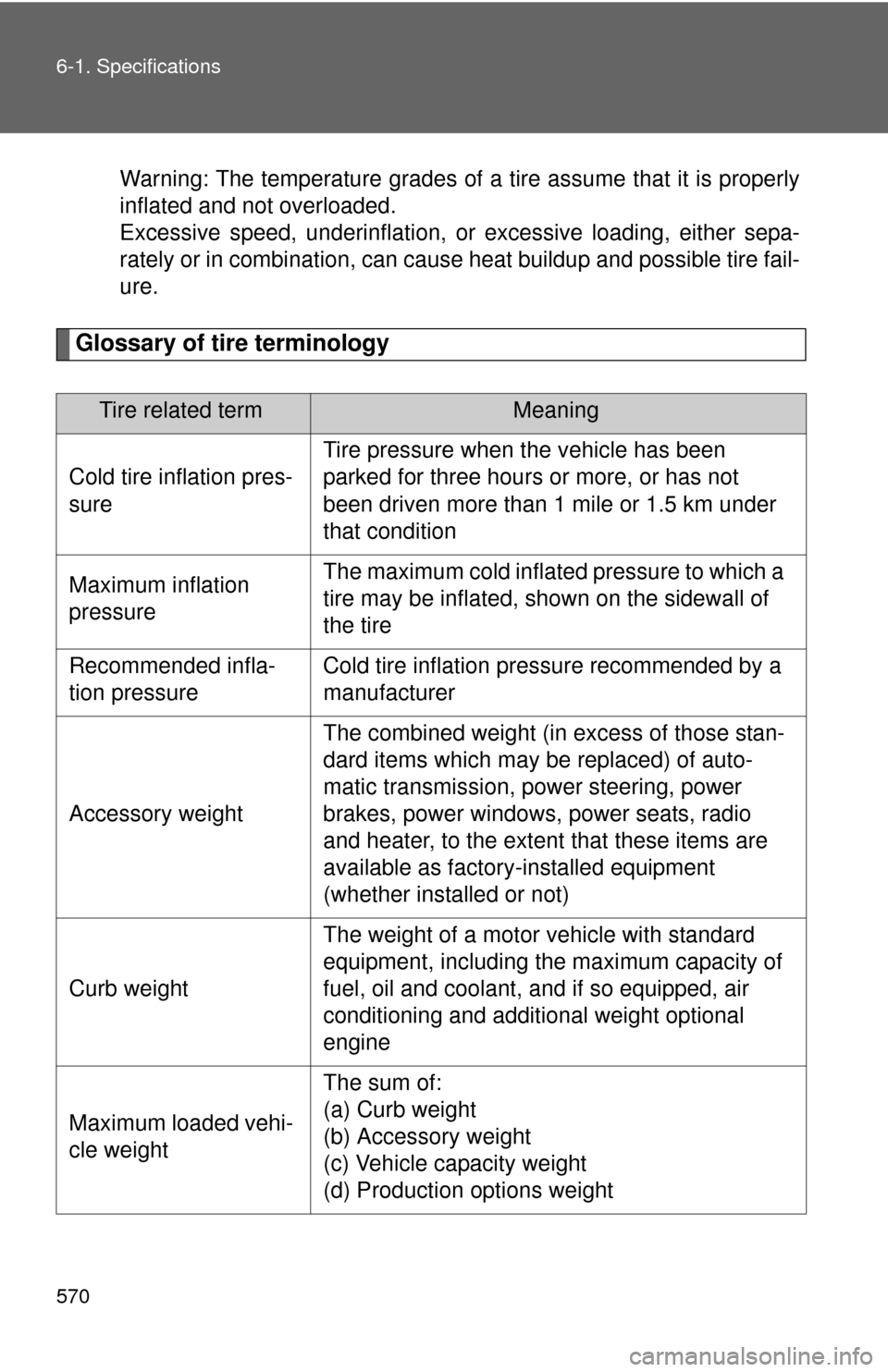Page 175 of 612
175
2-2. Instrument cluster
2
When driving
Engine coolant temperature displa
y/instrument panel light con-
trol display
Displays the engine coolant temperature and instrument panel light
control.
Outside temperature display
P. 379
Shift position display
Displays the currently selected shift position.
P. 168
Instrument panel light control button
P. 177
Page 435 of 612

435
4-3. Do-it-yourself maintenance
4
Maintenance and care
■
Coolant selection
Only use “Toyota Super Long Life Coolant” or a similar high quality ethylene
glycol based non-silicate, non-amine, non-nitrite, and non-borate coolant
with long-life hybrid organic acid technology.
U.S.A.: “Toyota Super Long Life Coolant” is a mixture of 50% coolant and 50% deionized water. (Minimum temperature: -31 F [-35 C])
Canada: “Toyota Super Long Life Coolant” is a mixture of 55% coolant and 45% deionized water. (Minimum temperature: -44 F [-42 C])
For more details about coolant, contact your Toyota dealer.
■ If the coolant level drops within a short time of replenishing
Visually check the radiators, hoses, engine/power control unit coolant reser-
voir caps, drain cock and water pump.
If you cannot find a leak, have your Toyota dealer test the cap and check for
leaks in the cooling systems.
CAUTION
■When the hybrid system is hot
Do not remove the engine/power control unit coolant reservoir caps.
The cooling system may be under pressure and may spray hot coolant if the
cap is removed, causing serious injuries, such as burns.
NOTICE
■When adding coolant
Coolant is neither plain water nor stra ight antifreeze. The correct mixture of
water and antifreeze must be used to provide proper lubrication, corrosion
protection and cooling. Be sure to read the antifreeze or coolant label.
■ If you spill coolant
Be sure to wash it off with water to prevent it from damaging parts or paint.
Page 489 of 612
5
When trouble arises
489
5-1. Essential information
If you think something is wrong
If you notice any of the following symptoms, your vehicle probably
needs adjustment or repair. Contact your Toyota dealer as soon as
possible.
■ Visible symptoms
●Fluid leaks under the vehicle
(Water dripping from the air cond itioning after use is normal.)
● Flat-looking tires or uneven tire wear
● The rightmost segment of the engine coolant temperature dis-
play flashes
■ Audible symptoms
●Changes in exhaust sound
● Excessive tire squeal when cornering
● Strange noises related to the suspension system
● Pinging or other noises related to the hybrid system
■ Operational symptoms
●Engine missing, stumbling or running roughly
● Appreciable loss of power
● Vehicle pulls heavily to one side when braking
● Vehicle pulls heavily to one side when driving on a level road
● Loss of brake effectiveness, s pongy feeling, pedal almost
touches the floor
Page 491 of 612

5
When trouble arises
491
5-2. Steps to take in an emergency
Stop the vehicle immediately.
The following warning indicates the possibility of damage to the vehi-
cle that may lead to an accident. Immediately stop the vehicle in a
safe place and contact your Toyota dealer.
Have the vehicle inspected by your Toyota dealer immediately.Failing to investigate the cause of the following warnings may lead to
the system operating abnormally and possibly cause an accident.
Have the vehicle inspected by your Toyota dealer immediately.
Warning lightWarning light/Details
Charging system warning light Indicates a malfunction in the vehicle’s charging system.
Low engine oil pressure warning light Indicates that the engine oil pressure is too low.
High engine coolant temper ature warning light (the
rightmost segment of the en gine coolant temperature
display flashes) Indicates that the engine is almost overheating. ( P. 542)
Warning lightWarning light/Details
(U.S.A.)
(Canada) Malfunction indicator lamp
Indicates a malfunction in:
• The hybrid system;
• The electronic engine control system; or
• The electronic throttle control system; or
• The hybrid transmission control system.
SRS warning light
Indicates a malfunction in:
• The SRS airbag system; or
• The front passenger occupant classification system; or
• The seat belt pretensioner system.
Page 542 of 612

542
5-2. Steps to take in an emergency
If your vehicle overheats
Correction procedures■ If the rightmost segment of th e engine coolant temperature
display are flashing
Stop the vehicle in a safe place and turn off the air condition-
ing system, and then stop the hybrid system.
If you see steam: Carefully lift the hood after the steam subsides.
If you do not see steam: Carefully lift the hood.
After the hybrid system has
cooled down sufficiently, inspect
the hoses and radiator core
(radiator) for any leaks.
Radiator
Cooling fans
If a large amount of coolant leaks,
immediately contact your Toyota
dealer.
The following may indicate that your vehicle is overheating.
●The rightmost segment of the engine coolant temperature dis-
play ( P. 174) is flashing or a lo ss of hybrid system power is
experienced. (For example, the vehicle speed does not
increase.)
● “HYBRID SYSTEM OVERHEAT” ( P. 503) is shown on the
multi-informat ion display.
● Steam comes out from under the hood.
STEP1
STEP2
STEP3
Page 543 of 612
5
When trouble arises
543
5-2. Steps to take in an emergency
The coolant level is satisfactory if
it is between the “F” and “L” lines
on the reservoir.
Reservoir
“F” (Full)
“L” (Low)
Radiator cap
Add coolant if necessary.
Water can be used in an emer-
gency if coolant is unavailable.
Start the hybrid system and turn the air conditioning system
on to check that the radiator cooling fans operate and to
check for coolant leaks from the radiator or hoses.
The fans operate when the air conditioning system is turned on
immediately after a cold start. Conf irm that the fans are operating by
checking the fan sound and air flow. If it is difficult to check these,
turn the air conditioning system on and off repeatedly.
(The fans may not operate in freezing temperatures.)
STEP4
STEP5
STEP6
Page 570 of 612

570 6-1. Specifications
Warning: The temperature grades of a tire assume that it is properly
inflated and not overloaded.
Excessive speed, underinflation, or excessive loading, either sepa-
rately or in combination, can cause heat buildup and possible tire fail-
ure.
Glossary of tire terminology
Tire related termMeaning
Cold tire inflation pres-
sure Tire pressure when the vehicle has been
parked for three hours or more, or has not
been driven more than 1 mile or 1.5 km under
that condition
Maximum inflation
pressure The maximum cold inflated
pressure to which a
tire may be inflated, s hown on the sidewall of
the tire
Recommended infla-
tion pressure Cold tire inflation pressure recommended by a
manufacturer
Accessory weight The combined weight (in excess of those stan-
dard items which may be replaced) of auto-
matic transmission, power steering, power
brakes, power windows, power seats, radio
and heater, to the extent that these items are
available as factory-installed equipment
(whether installed or not)
Curb weight The weight of a motor vehicle with standard
equipment, including the maximum capacity of
fuel, oil and coolant, and if so equipped, air
conditioning and additional weight optional
engine
Maximum loaded vehi-
cle weight The sum of:
(a) Curb weight
(b) Accessory weight
(c) Vehicle capacity weight
(d) Production options weight
Page 602 of 612

602 Alphabetical index
EngineAccessory mode.................... 157
Compartment ........................ 429
Hood...................................... 426
How to start the
hybrid system...................... 157
Identification number ............. 550
If the hybrid system will not start ............................... 531
Ignition switch........................ 157
Overheating........................... 542
“POWER” switch ................... 157
Engine coolant Capacity ................................ 555
Checking ............................... 434
Preparing and checking before winter ....................... 229
Engine coolan t temperature
display .................................... 174
Engine oil
Capacity ................................ 553
Checking ............................... 430
Preparing and checking before winter ....................... 229
Engine/power control unit coolant
Capacity ................................ 555
Checking ............................... 434
Preparing and checking before winter ....................... 229
EPS ............................................ 207
EV drive mode .......................... 165
Event data recorder ...................23 Floor mat .................................. 388
Fluid
Brake..................................... 436
Washer.................................. 438
Fog lights
Replacing light bulbs ............. 471
Switch ................................... 198
Wattage................................. 560
Front fog lights Switch ................................... 198
Wattage................................. 560
Front passenger occupant classification system ............ 125
Front passenger's seat belt
reminder light ........................ 493
Front seats Adjustment .............................. 76
Front side marker lights Replacing light bulbs ............. 471
Wattage................................. 560
Front turn signal lights Replacing light bulbs ............. 471
Wattage................................. 560
Fuel Capacity ................................ 552
Fuel gauge ............................ 174
Gas station information ......... 612
Information ............................ 561
Refueling ............................... 102
Type ...................................... 552
Fuel door .................................. 102
Fuel filler door .......................... 102
Fuses ........................................ 460F